The Statue of Liberty: Engineering an Icon
- Youtube Views 1,613,327 VIDEO VIEWS
IN New York Harbor stands a statue that is synonymous with freedom and democracy; one of the world’s most recognizable landmarks and a symbol of hope for millions. But to truly appreciate this iconic structure you need to understand the financial and technical challenges it faced in becoming reality. This is the construction story behind one of the greatest engineering achievements of the 19th Century.
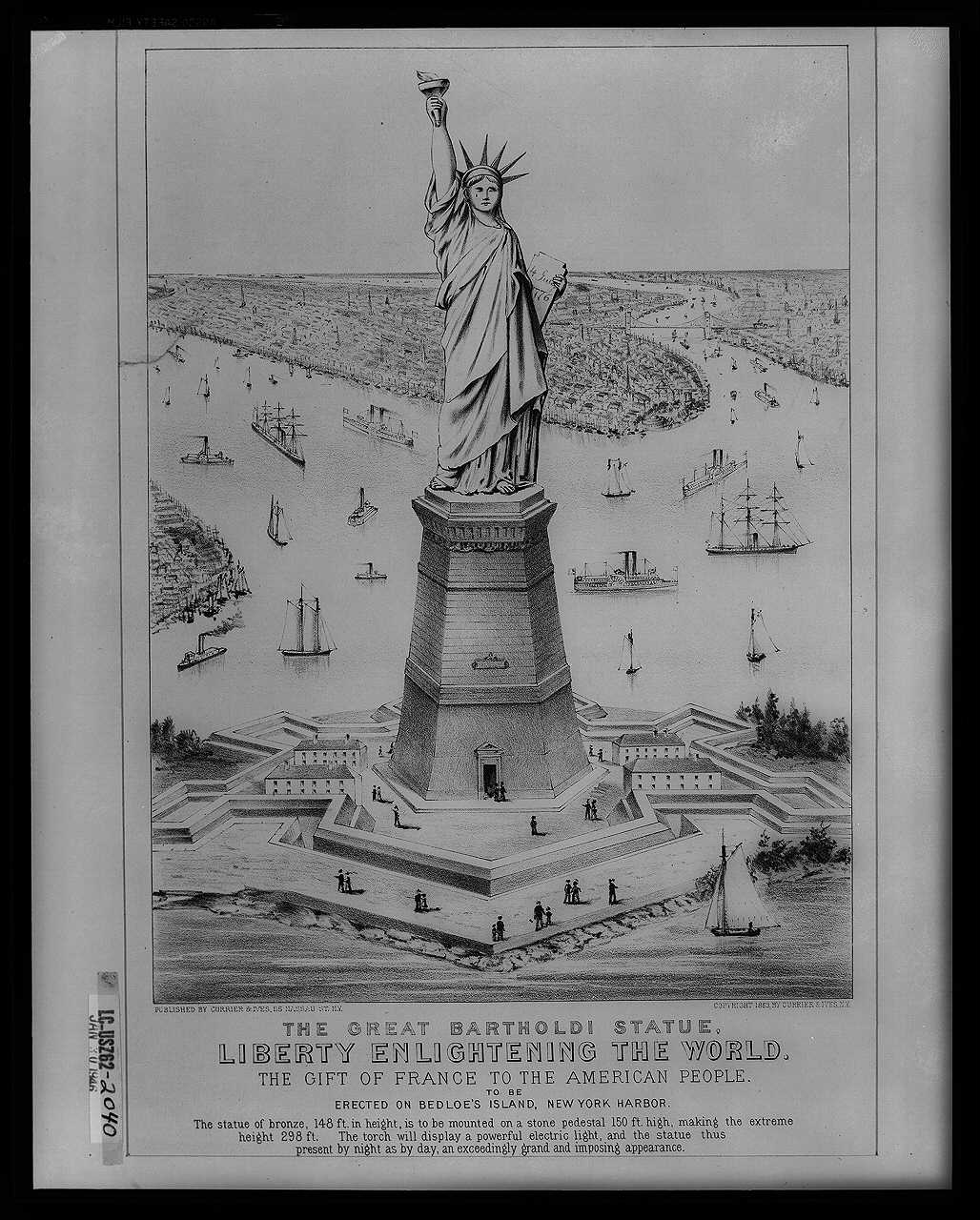
Above: Conceived to celebrate the centenary of American independence the statue was named “Liberty Enlightening the World”.
Still the tallest statue in the United States – more than 130 years after its completion – the Statue of Liberty was a record breaking construction project. At the time, the giant undertaking held titles such as the tallest iron structure ever erected, the largest concrete pour ever undertaken and the largest use of copper in a single structure.
The Statue of Liberty was conceived to celebrate the centenary of American independence by a French political intellectual and anti-slavery activist named Edouard de Laboulaye. He proposed the statue to honor both the centennial and the United States’ friendship with France in 1865. Five years later – in 1870 – French sculptor Frédéric Auguste Bartholdi began designing the statue; a robed female figure representing the Roman goddess Libertas.
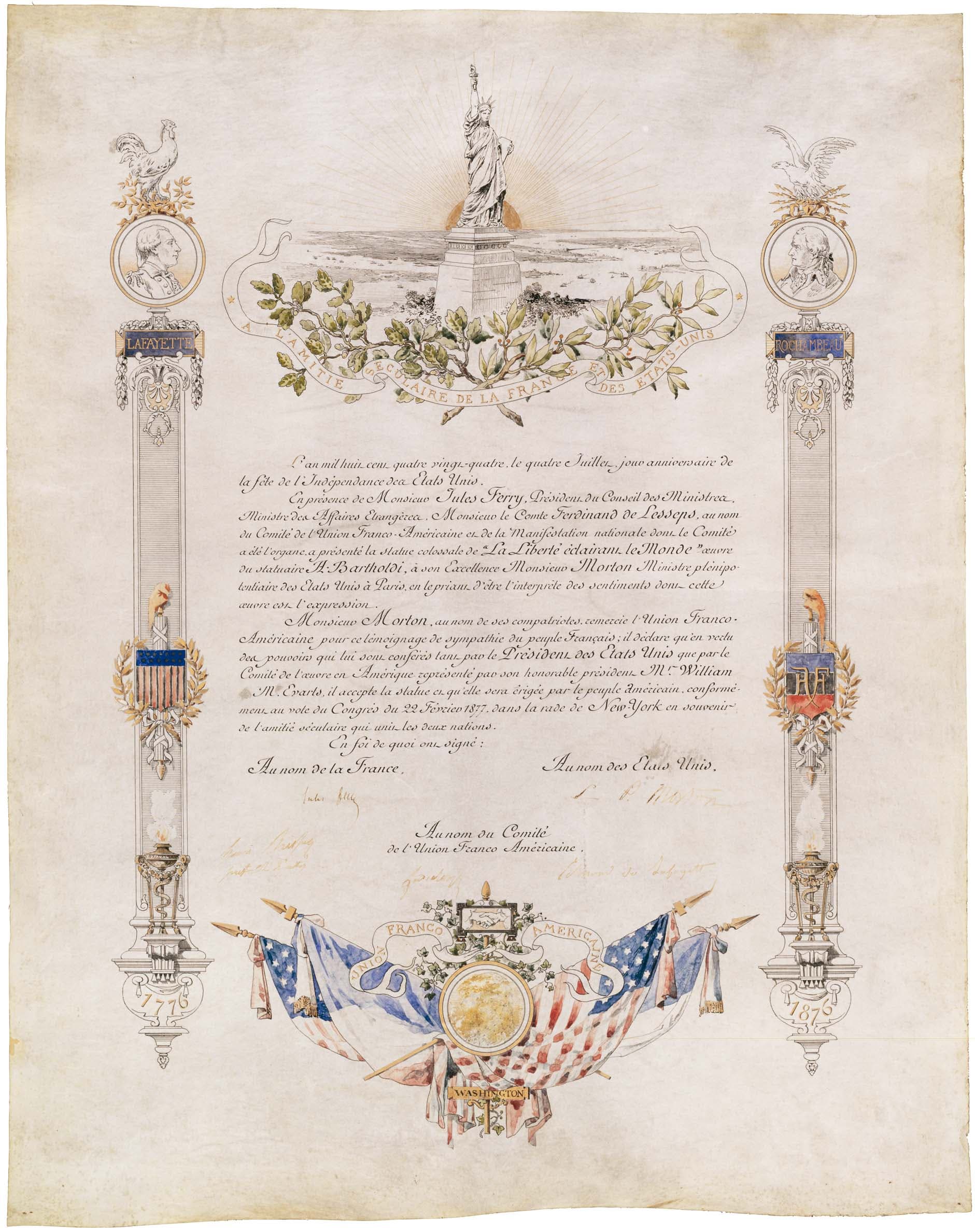
Above: While France funded the statue, the United States was responsible for providing a site and financing the pedestal.
TRANSATLANTIC CONSTRUCTION
Following a visit to the US, where Bartholdi met with many prominent Americans, including President Ulysses S. Grant, the project was announced in 1875. The statue was given the name “Liberty Enlightening the World”, a title she would keep right up to 1924 when she became a National Monument and was officially renamed “The Statue of Liberty”.
While France would finance the statue, the American’s would be responsible for providing a site and constructing the huge pedestal upon which the statue would stand. To finance both elements, ambitious fundraising campaigns began on both sides of the Atlantic.
While overall plans for the statue remained to be finalized, Bartholdi began fabricating the right arm, bearing the torch, to help gain public support for the project. The arm was shipped to America and displayed at the Centennial International Exhibition of 1876, the first official World's Fair. For a fee of 50 cents, visitors could climb a ladder to the balcony, with the money raised going directly towards the pedestal fund.
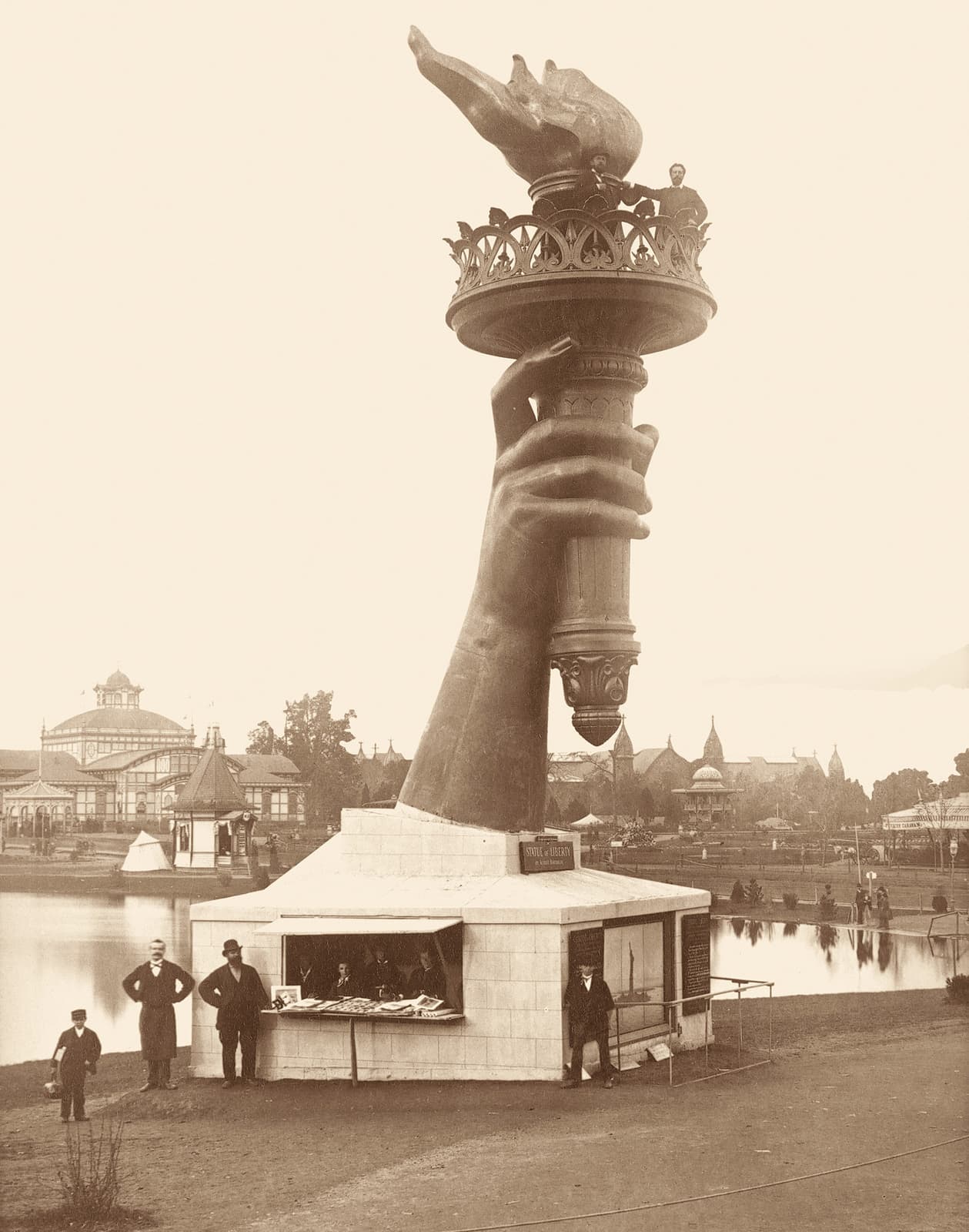
Above: To raise awareness and funds the right arm, bearing the torch, was displayed at the Centennial International Exhibition of 1876.
When the exhibition closed, the arm was transported to New York where it remained on display in Madison Square Park for six years before being reunited with the rest of the statue in France. In a similar vein, the head and shoulders were also constructed and became one of the main attractions at the 1878 Paris Universal Exposition.
During construction, models of the statue were put on sale, tickets to view the construction workshop were offered and the French government authorized a lottery. By the end of 1879, some 250,000 francs had been raised. The statue itself was an incredible piece of cutting-edge engineering.
ENGINEERING AMERICA'S TALLEST STATUE
To make his colossal statue a reality, Bartholdi sought out the expertise of France’s top professionals. First he hired his mentor, Eugène Viollet-le-Duc, the architect responsible for the restoration of Notre Dame in Paris. Acting as chief engineer Viollet-le-Duc, designed a brick pier within the statue, to which the skin would be anchored.
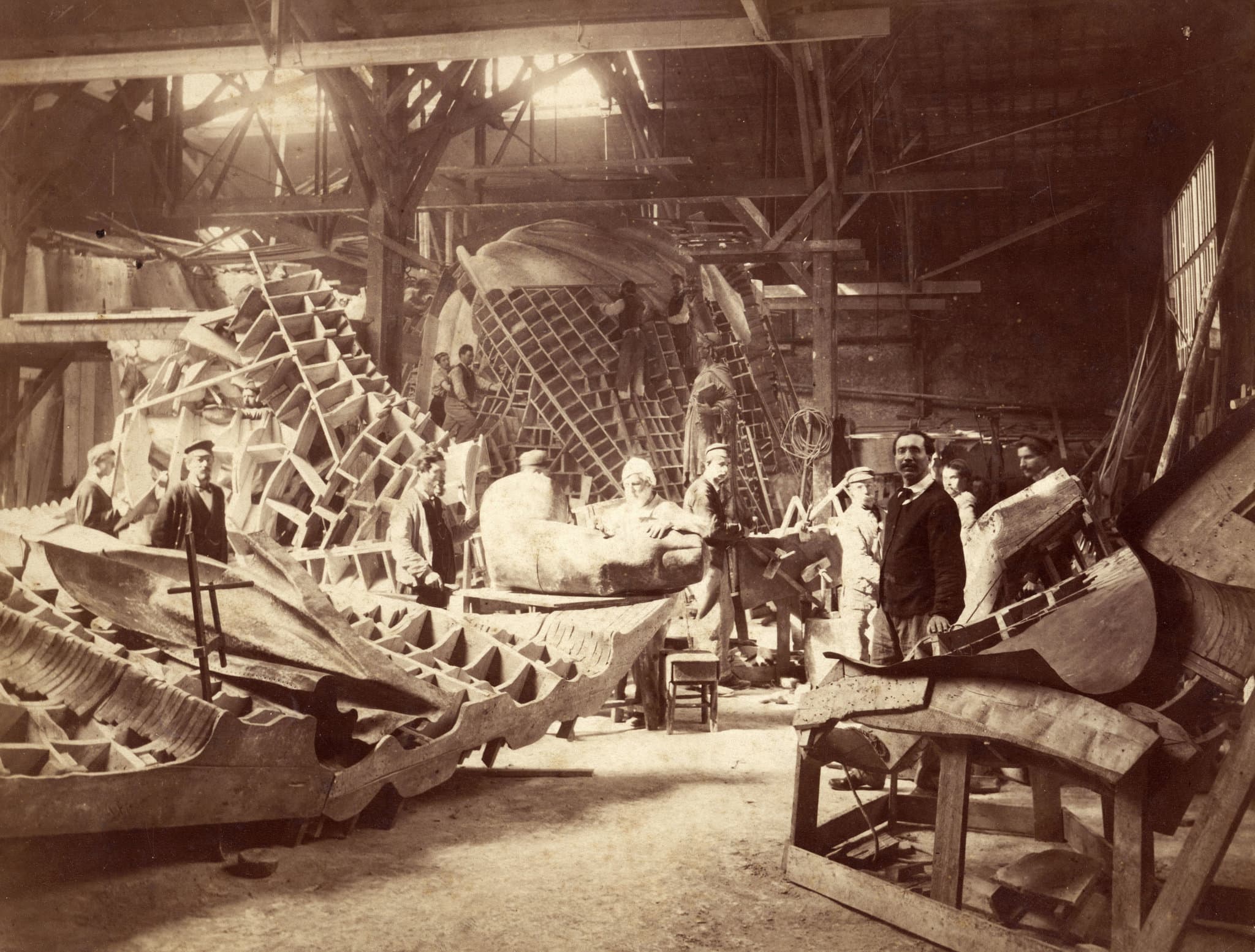
Above: The copper skin was shaped using a method called “repoussé” in a workshop in France.
For the skin itself, Viollet-le-Duc choose copper. These sheets would be shaped using a method called “repoussé”, in which the copper was heated and then struck with wooden hammers. The copper was hammered to less than a tenth of an inch (or 2.4 mm) thick, creating a statute that is considerably light given its volume.
When Viollet-le-Duc died unexpectedly in 1879, the innovative Gustave Eiffel was hired to replace him. While Eiffel retained Viollet-le-Duc’s copper cladding, he abandoned the brick internal pier, instead opting to take a more modern approach.
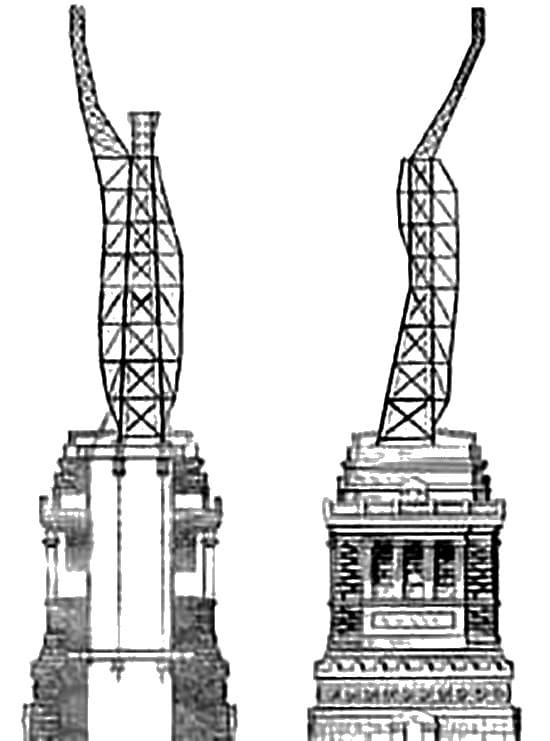
Above: Gustave Eiffel designed the statue's primary structure.
He designed a central iron pylon standing 92 feet (or 28 meters) tall that acted as the primary support for the structure; a forerunner for his famous tower in Paris. Originally assembled in France, the pylon serves as the spine of the statue supporting a secondary skeleton “or armature” that conforms to the outer contours.
The armature alone contains over a mile of iron bars, each 2 inches wide. The 300 sections of copper sheet, weighing a total of 80 tonnes, were attached to the armature using 1500 U-shaped copper saddles and some 300,000 copper rivets.
Eiffel’s then-innovative design makes the statue one of the earliest examples of curtain wall construction; the structure’s exterior is not load-bearing, and is instead supported by an interior framework.
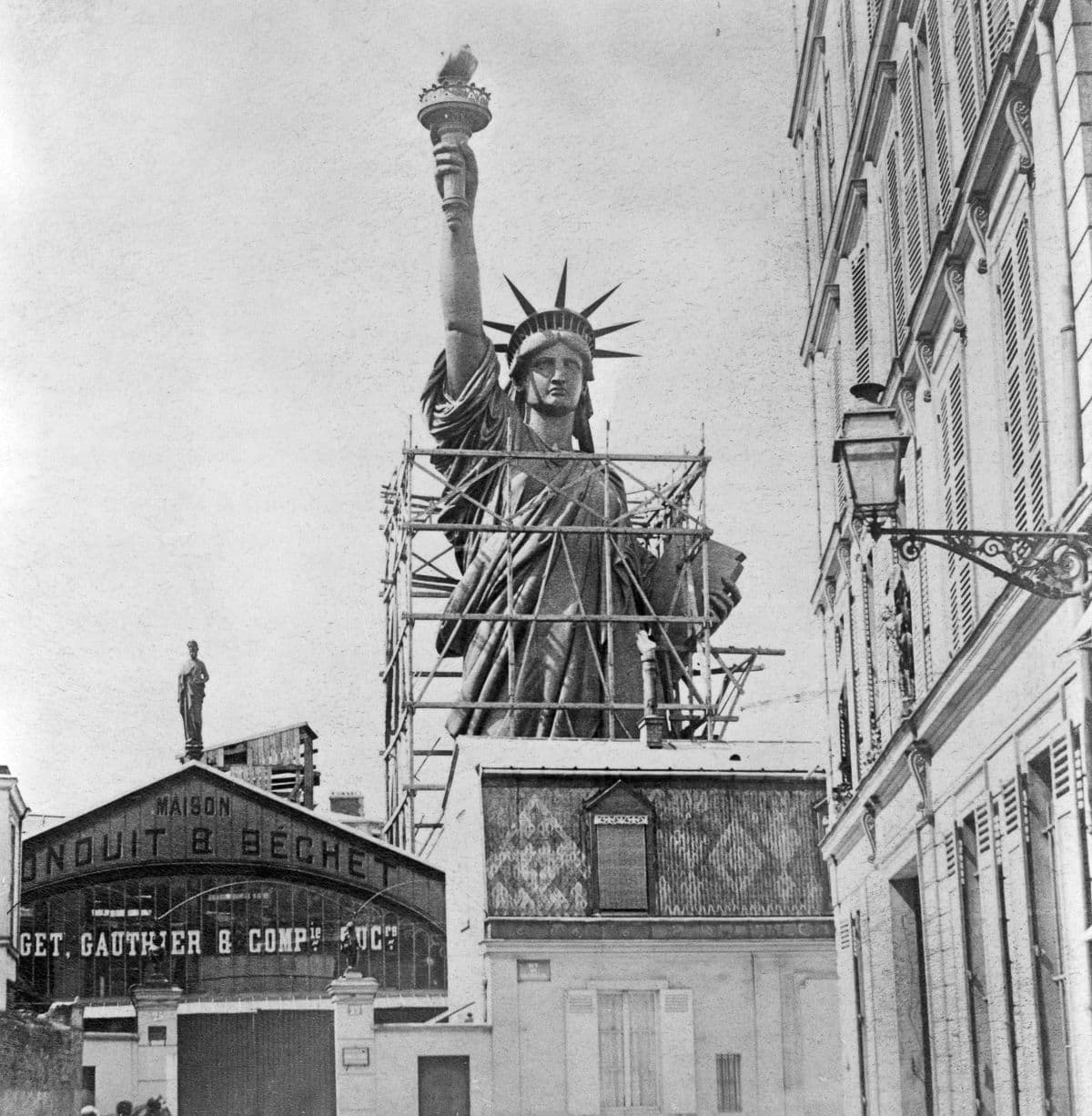
Above: The Statue of Liberty was assembled in France, before being disassembled and shipped to the United States.
With his experience of bridge building and engineering to accommodate wind loads, Eiffel opted not to create a rigid structure. The flexibility of his design allows the statue to withstand the winds across New York Harbour and the Atlantic, and temperature changes, which could force stresses to accumulate in the skin, leading to cracking. In a strong wind the statue can move by as much as 3 inches, while the arm can deviate up to 5 inches.
Combining Eiffel and Viollet-le-Duc’s designs, the entire statue was manufactured and then assembled in Paris between 1881 and 1884. It was then disassembled, packed into 214 crates and shipped to the United States aboard the French Navy ship, Isère. The prefabricated statue was met with great fanfare in New York Harbor on June 17, 1885 – before the pedestal’s completion.
A PEDESTAL FOR LADY LIBERTY
Although the statue was a gift from France, providing a location and funding the construction of the pedestal fell to the United States. On Bartholdi’s trip to New York in 1871, he marked a small island in the harbor as an ideal location for his creation. Fortuitously, the island – home to a disused army base – was already owned by the US Federal Government. With a signed resolution from President Grant, the island was selected as the site for the statue – its 11-point star-shaped “Fort Wood” set to become pedestal’s base.
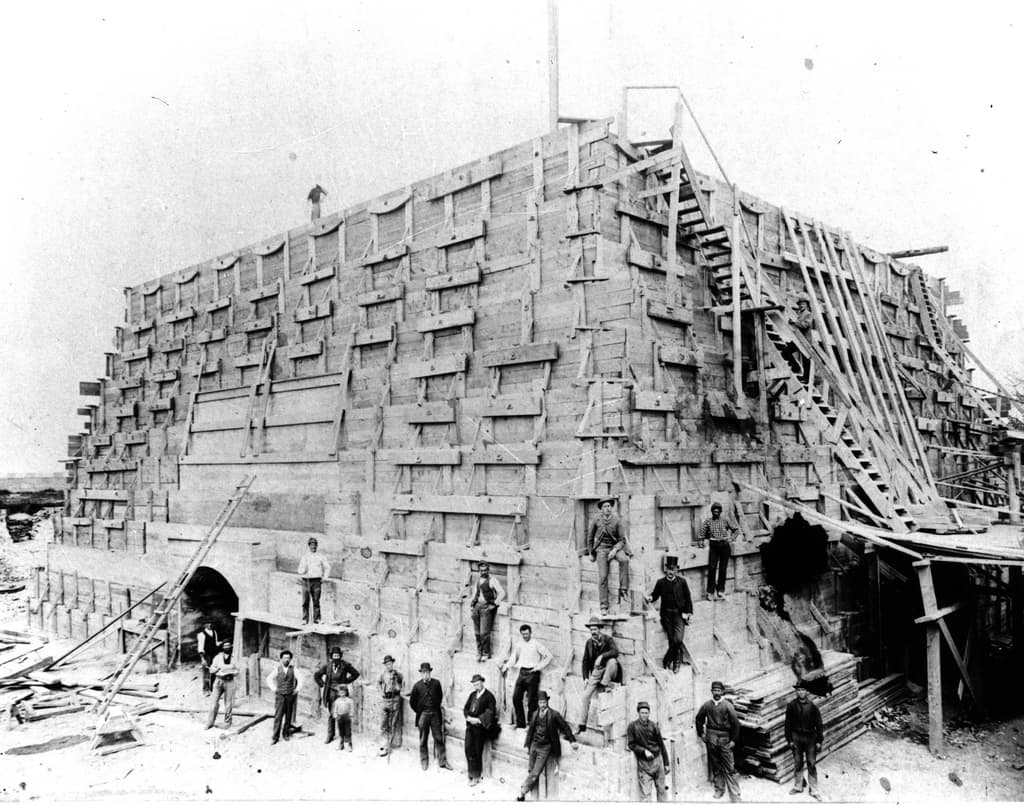
Above: Building the pedestal involved the largest concrete our ever undertaken (image courtesy of National Park Service).
While it may seem hard to believe today, securing funding for the project was actually extremely difficult. With just $150,000 USD raised the project
stalled, prompting Joseph Pulitzer – publisher of New York newspaper The World – to launch a campaign to raise the remaining $100,000.
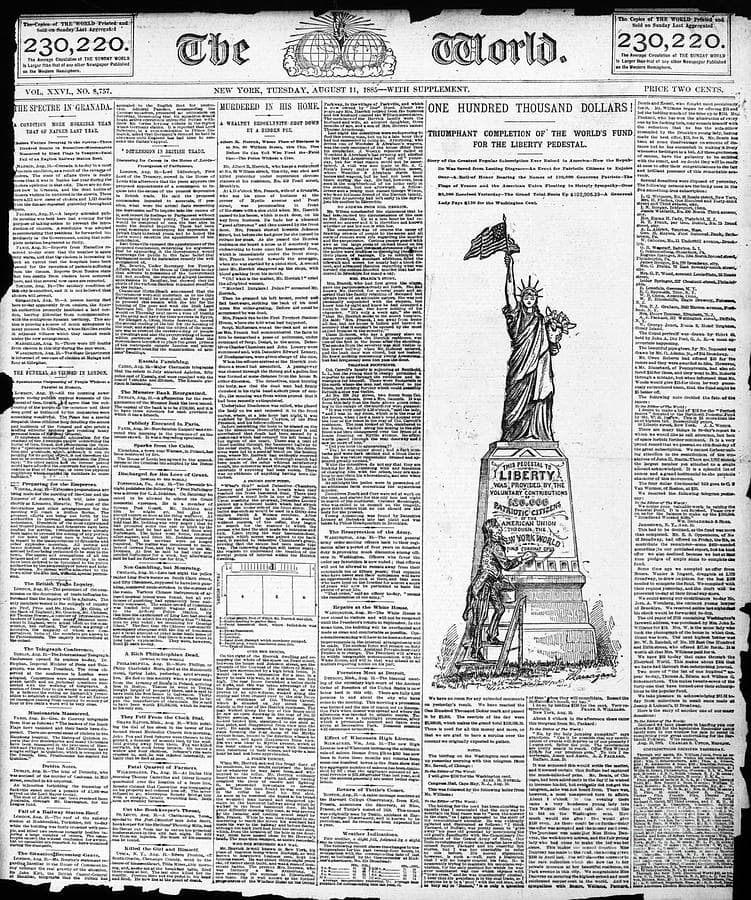
Above: New York newspaper The World raised $100,000 USD to help fund the statue.
Pulitzer achieved his target, with a staggering 80% of the funds being received in sums of less than one dollar. The neoclassical pedestal – standing some 89 feet, or 27m tall – was an impressive construction feat in itself. Richard Morris Hunt, a founder of the American Institute of Architects, was chosen to design the structure whilst General Charles P. Stone was appointed engineer-in-chief.
Hunt's original concept would have seen the pedestal constructed from solid granite, but financial concerns forced him to revise his plans and instead embark on the largest mass concrete pour undertaken to date. The final design called for poured concrete walls, up to 20 feet or 6.1 m thick, faced with granite blocks.
To accommodate the anticipated wind loads, four huge reinforcing girders, formed into a square were set into the concrete 29-feet up the pedestal. A second square of girders was placed 55 feet higher, a few feet from the top of the pedestal, with the two sets connected by the iron tie beams. The statue itself was then anchored to these beams make Liberty and her concrete base one entity.
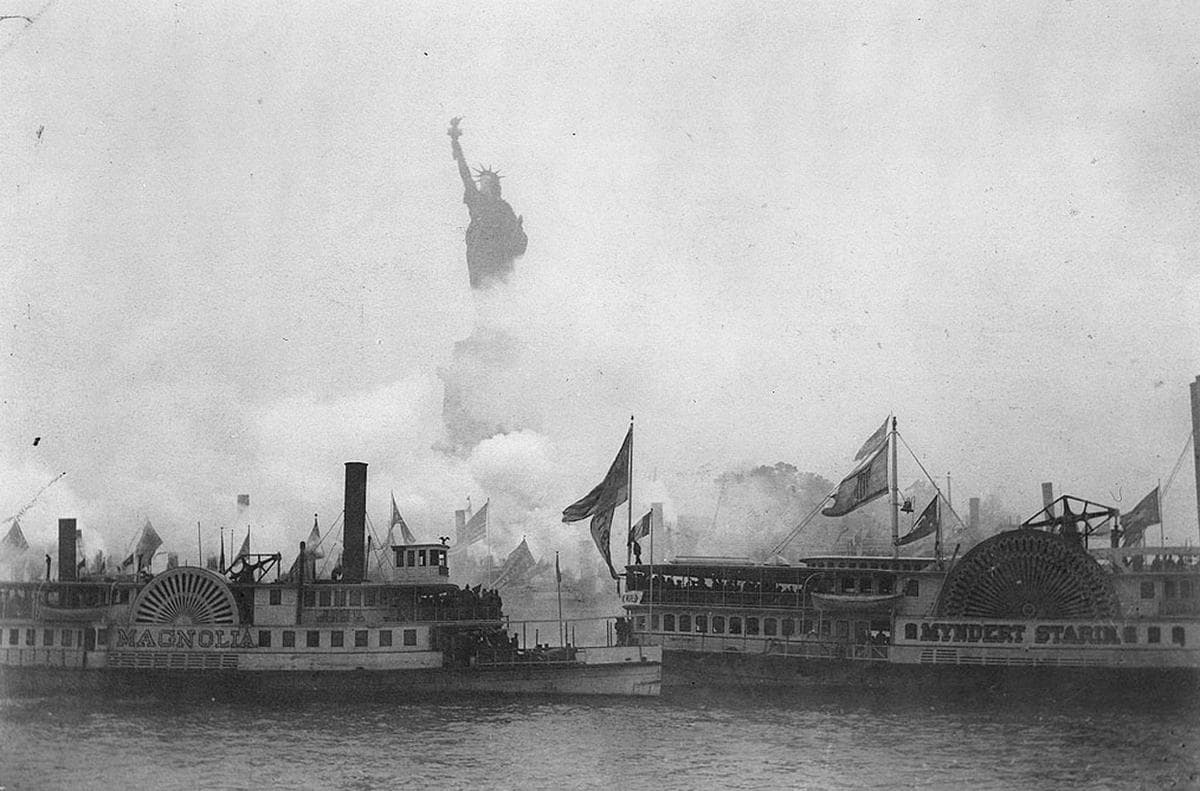
Above: The statue was unveiled on October 28, 1886 (image courtesy of Library of Congress).
When the pedestal was completed in 1886, the statue was rapidly reassembled on top of it. Twenty years after it was first imagined, on October 28, 1886 the copper coloured statue was unveiled. It would take a further 30 years to oxidise and become the distinctive green colour we see today.
Realising this icon was a significant undertaking that engaged leading professionals of the time on both sides of the Atlantic Ocean. Today the Statue of Liberty stands proud at the gateway to America; an enduring symbol of freedom and democracy, and of what human engineers are truly capable of.
Images courtesy of Albert Fernique, Library of Congress, National Park Service, Ullstein Bild, New York Public Library, FPG, Jet Lowe, CDSG Digital Library and the Museum of the City of New York. We welcome you sharing our content to inspire others, but please be nice and play by our rules.








